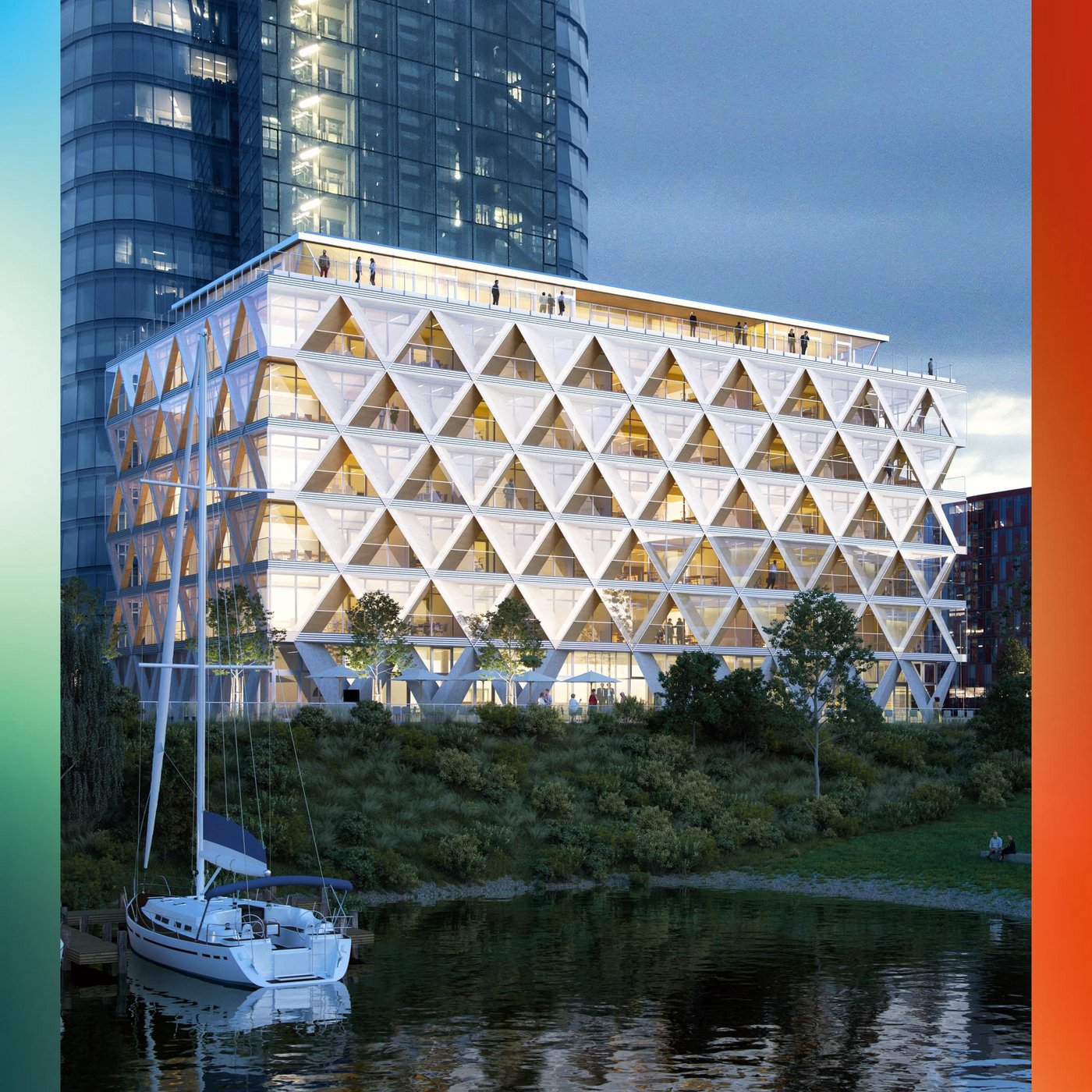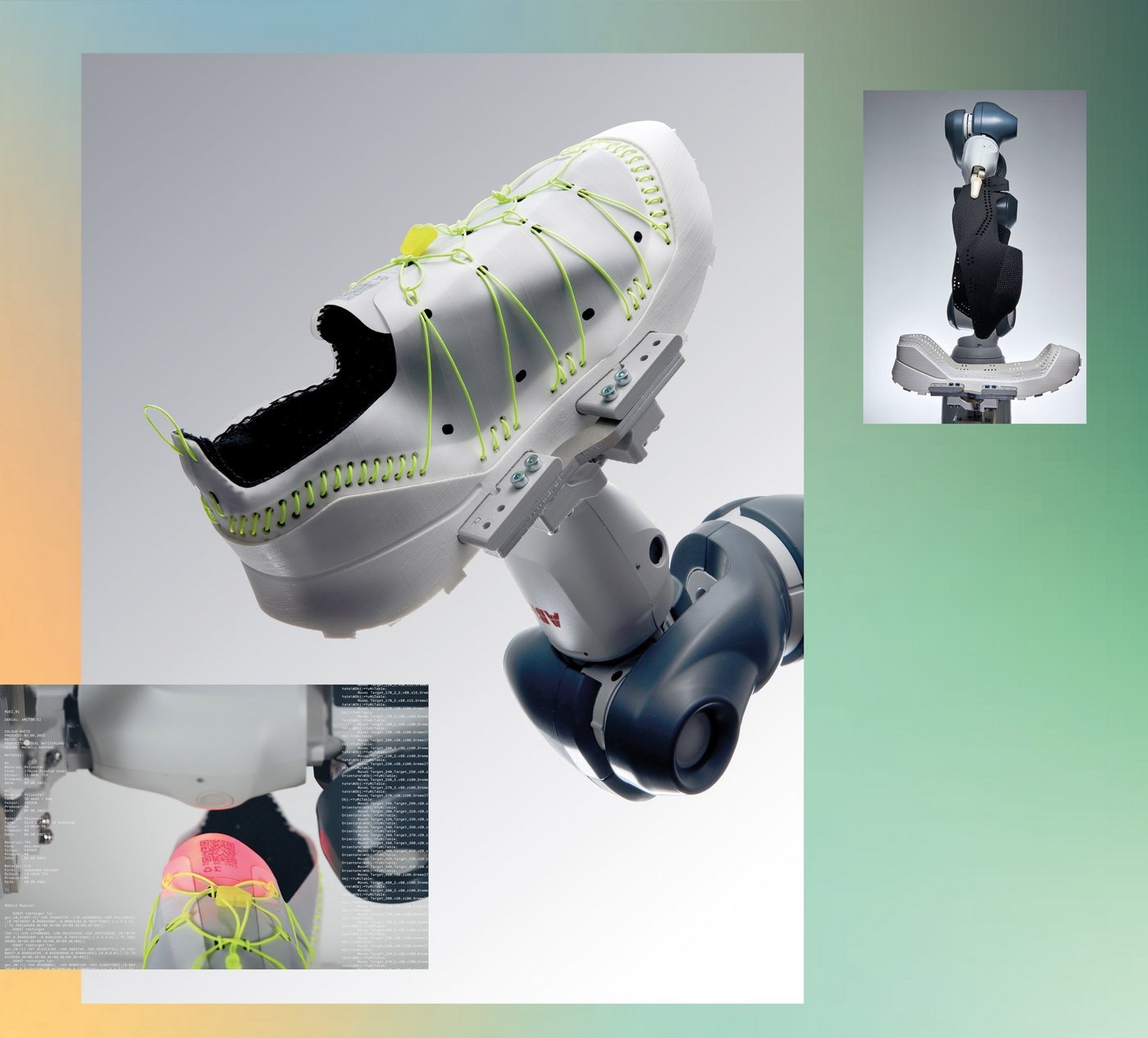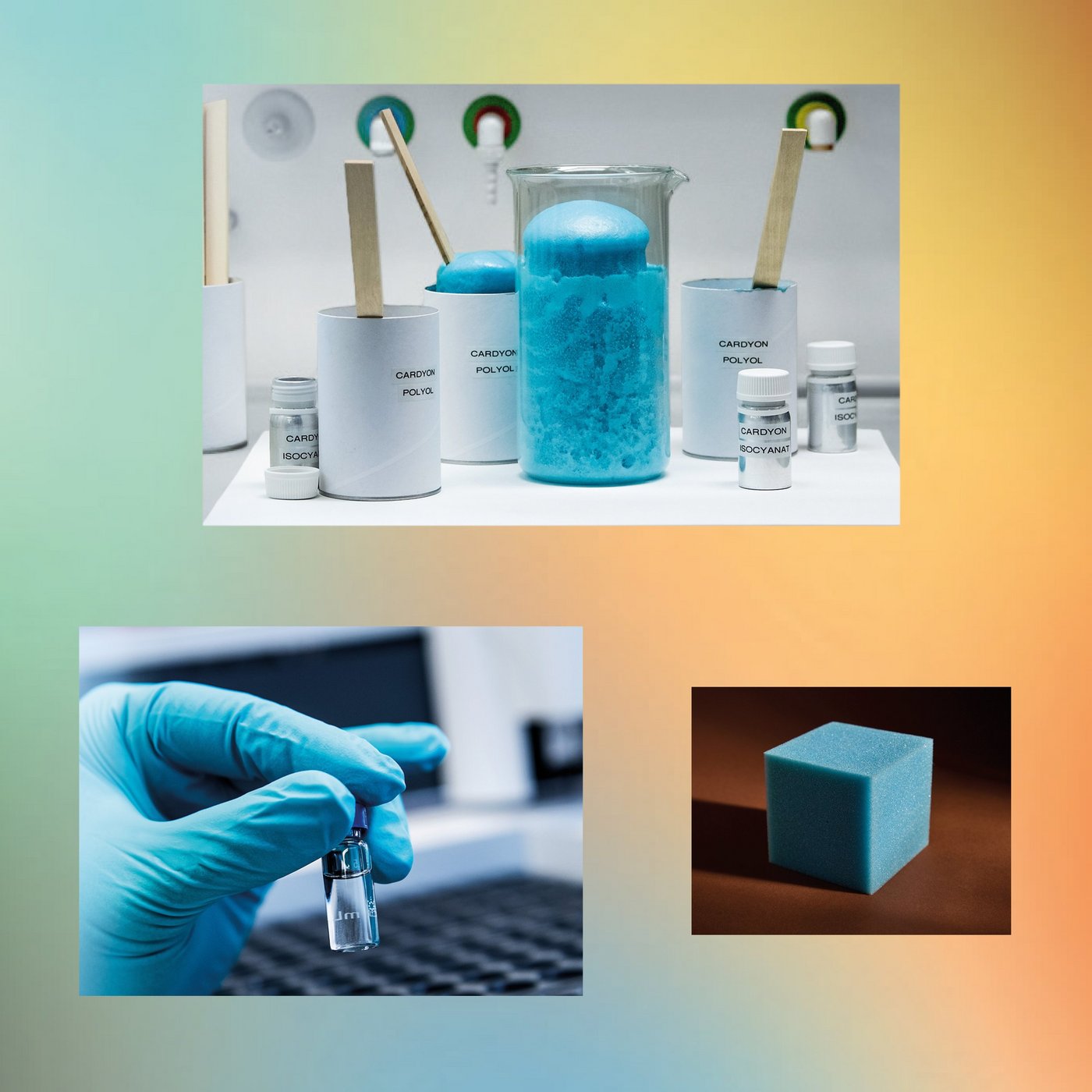THE TRUE CRADLE OF THE ECONOMY

The new world economy began symbolically on a day in April in the year 1956. The forward-thinking Malcom McLean had finally implemented his vision, and thus the completely remodeled ship “Ideal X” set sail that day, loaded with more than fifty rectangular boxes. At least that’s how it must have looked to the dockworkers who were watching the ship from the jetty. After all, most cargo had previously been shipped in bales or sacks, but now everything was going to change: McLean had just founded the era of container shipping.
These containers proved ideal for the beginnings of globalization, which involved a number of other rapid developments: logistics prices fell dramatically, worldwide networking increased and, at the same time, humankind began consuming goods in a completely new way. Previously people had long been in the habit of repurposing things, repairing them or using them until they basically fell apart. For centuries, valuable materials were reused instead of just being thrown away, something archaeologists had discovered: the ancient world was a society of recyclers. For instance, glass was repeatedly melted down and reused, old clothing could be turned into paper, and the buildings of antiquity were quite naturally used as quarries for construction materials during the Middle Ages.
The boom in raw materials in the post-war period, with cheap crude oil, inexpensive coal and seemingly unlimited resources, brought unprecedented prosperity to much of the world. It also opened the floodgates—at least in the Western-oriented market economies—to a brave new world of consumerism. Now it made more economic sense to use a raw material only once instead of recycling it. The new mantra was: produce, use, discard.
There have always been doubts about this economic approach. Fifty years ago, in 1972, the Club of Rome published a report titled The Limits to Growth. The book warned about the dangers of a society that was designed only for growth. The authors’ warnings included the fact that raw materials would eventually run out just as damage to the environment would increase. The book received a great deal of attention, yet despite the oil-price shocks and awakening environmental awareness in the 1970s, the economy did not fundamentally change. The concept of restraint wasn’t practicable in a world where there seemed to be absolutely no limits to growth—neither for companies nor for consumers. Growth continued its upward spiral with the help of increased productivity, research and development, as well as high-tech methods of exploration. It seemed as if there were actually no limits and that things could continue like this forever.
Until now, that is. As Henning Wilts from the Wuppertal Institute for the Climate, Environment and Energy explains, a storm has been brewing in recent years: “Firstly, the costs for raw materials are climbing, which can make it sensible to reuse them instead of always buying new ones. Secondly, it’s becoming increasingly difficult to keep acquiring more and more resources. And, thirdly, in some societies there is pressure on companies to become more sustainable.”
Companies thus face a dilemma: they cannot turn back time to the era before mass consumerism and globalization without causing the world economy to collapse. Pure abnegation is also not a solution, and definitely not an economically sensible one in a world economy that is designed for growth. At the same time, continuing the current economic model over the long run is also untenable. So how does this circle get squared?
It’s actually a blueprint that’s been around for twenty years that could point the way to a future for business that combines all the seemingly conflicting goals: resource conservation, environmental relief and a continuing high degree of consumption and consumerism. Many established companies already have specific targets for it, others see great potential in it, and the chemical company Covestro (formerly Bayer MaterialScience), for example, plans to align its entire business model to it. The idea here is the circular economy in a globalized world. Instead of “produce, use and discard,” products will be created that people buy, use and reuse for as long as possible, until, at the very end, the products or parts are returned to the economy, which will in turn manufacture new products from them.
“Cradle to cradle” is the name of this model, as described by the German chemist Michael Braungart and the American architect William McDonough in their eponymous bestseller. In the early 2000s, they outlined a new economic order with their modern version of the circular economy, one that could allow for resource-conserving consumption and an affluent society. To date, however, only 8.6 percent of all raw materials are recycled worldwide. Why is that? A look at examples from three projects and industries shows that much is possible, but the obstacles remain numerous.

One person who truly believes in the circular economy and wants to prove its feasibility in architecture is Antonino Vultaggio. He’s a senior partner at HPP Architects and in this role is overseeing the construction of one of the world’s most modern office buildings. But can it even be called that? Asked about it, the architect smiles and talks instead about a raw materials “storehouse”—Düsseldorf’s first office building using wood-hybrid construction, now under construction.
The construction industry is a prime example of an industry that could use a circular economy to make dramatic changes. New buildings around the world are one of the main consumers of raw materials such as sand and iron, as well as one of the biggest drivers of rising carbon dioxide emissions. The potential for savings would correspondingly be quite large. “But we’ve been thinking about this all wrong in the construction industry,” Vultaggio says. “Buildings are only built once and the raw materials are never reused after that. We have to change that.”
His current project, which is largely made of wood and carries the name The Cradle, is intended to show how things can be done differently. The firm reports that the construction of this building will produce less emissions compared to a more conventional office building. It is designed from the outset to ensure that the components are as durable as possible—but can do much, much more. The owner will be able to completely dismantle the building in a few decades, and a majority of its raw materials can be recycled because they’ve been selected for varietal purity and are toxin-free, as well as reversibly connected. For instance, the glass can be removed, melted back down and processed into new panes; the concrete, assuming it’s in good condition, could find a new home in another building; and of course the main building element is wood, which has the most options for future use.
The process is relatively simple: a company takes the current wooden components, disconnects them piece by piece, and replaces them with new ones. The old wood then gets returned to the original manufacturer, for example, where depending on its condition it can either be reused, reprocessed or utilized, via downcycling, for other wood products. The company Derix, which is supplying the wood for the façade, has already agreed to take back the materials at the end of the period of use and plans to reuse them for equivalent products, such as another façade. “After all, our building components are so durable that they can be used many decades after initial production,” said Sales Director Markus Steppler at the Derix Group at the start of this new service. Due to the many imponderables, it won’t be easy. For instance, it isn’t possible to recertify or test the used parts because the standards for this haven’t yet been developed. It also isn’t possible to calculate the take-back price decades in advance since this can strongly depend on the wood’s quality or the market situation at that point in the future.
To make this new construction method possible, HPP Architects have designed the building so that the wood can be renewed cyclically. The components are designed according to the “design for disassembly” concept, meaning that the elements are held together with reversible connections. This allows wooden elements to be removed, piece by piece, without destroying them or leaving behind residues, such as adhesives. “For instance, the outer surfaces are usually replaced after seven to twelve years,” Vultaggio says. Not because the surfaces wouldn’t be intact, but because people want change. After 30 to 35 years comes the replacement of the façades, and then, after 80 to 100 years, the replacement of the building’s shell.
This is also possible because The Cradle is working with what is known as a Material Passport. Much like a person’s passport, this documents the most important characteristics of the products and materials, including their impact on human health, carbon dioxide footprint, dismantlability, sortability and recyclability. “In this way we’re removing the anonymity of the materials and giving them a value,” Vultaggio explains.
“In this way we’re removing the anonymity of the materials and giving them a value.”
Using The Cradle as a model, there are three advantages right off the bat. Number 1: The construction produces less carbon dioxide, protecting the environment. Number 2: The building retains its value or may even increase in value, for instance if the prices for the raw materials used increase. And number 3: The company that takes back the building components has the advantage of being able to obtain raw materials more cheaply—or even at all—if they should become more expensive or rare in the future. Wilts from the Wuppertal Institute sees yet another clear advantage: “The companies become much less dependent on imports or purchases.” All of this is important in helping make the circular economy a success. Without economic incentives, industries are unlikely to move in this direction.
However, Anette Müller believes there are more decisive factors holding back progress. She held the Chair of Building Materials Processing and Recycling at the Bauhaus University in Weimar, Germany, from 1995 to 2011 and is currently a staff member at the Weimar Institute of Applied Construction Research. She says that over the past several decades, policymakers have failed to set up an appropriate framework. For instance, this could include agreeing on standards for when what type of building material may or may not be reused for defined purposes. At the same time, there’s been a lack of monetary incentives for the construction industry to address the issue.
The example of the construction industry shows not only some of the advantages but also a number of the obstacles to a modern circular economy. In a way, it’s the problem of the chicken or the egg—if no company dares to become the trailblazer, the model will never work. At the same time, the initial investment costs will be extremely high for the pioneer. Moreover, there is no political framework to at least not make it unnecessarily difficult for companies to put their new ideas into practice. “Companies want a basic legal framework and policymakers are hoping the industry will do something and what we have is basically a stalemate,” says Wilts, describing the dilemma. What’s more, the whole idea will only work if it is considered internationally and across multiple industries. It won’t work without the chemical industry on board, nor will it function without the construction industry and other manufacturing sectors. “And that of course is very difficult to coordinate, much like protecting the climate,” Wilts says. Ultimately, however, he explains that there’s only really one inconvenient solution: someone has to get the ball rolling.

One person who wants to get the ball rolling is Maxwell Ashford. The designer has developed a concept shoe that fundamentally rethinks the traditional manufacturing process. Until now, used sneakers arrive at a facility without the staff or machines there knowing anything about their components. As Ashford explains, the shoes were simply shredded and the parts were then painstakingly sorted, leading to a large amount of waste. His RUEI-01 concept shoe is different, although at first glance, with its white sole, grey fabric surface and neon-yellow laces, it doesn’t seem particularly distinct from any other trendy shoe worn around the world.
However, at second glance it’s a fundamentally different product. From the very beginning, at the product development stage, the shoe was designed according to an important principle of the circular economy: to be easily recyclable in the first place. While most sneakers made today are held together with state-of-the-art adhesives and intended only for single use, the concept shoe is designed so that the components can easily be detached from one another later. Ashford’s demonstration video shows how this works: a robot grabs the sneaker, scans the QR code printed on the tongue and thus obtains all the relevant information, including what materials have been used and how the shoe can be disassembled. With that information, the robot can take the neon-yellow laces and detach them from the shoe, followed by the tongue and then, piece by piece, the remaining components. The robot easily sorts the various materials into separate boxes. Afterwards, companies could put those materials back into their product cycles. This gives resources a longer useful life while maintaining quality and without having to use them for lower-quality products.
Modular construction methods make it easier to keep resources in circulation while maintaining quality.

One person thinking about these types of ideas on an industrial scale is CEO Markus Steilemann of Covestro (formerly Bayer MaterialScience). He’s been pledging to his employees for years that his corporation will adapt to the circular economy. Generally, the chemical industry as a whole plays an important part in any potential new business processes. Without their manufacturing processes or even chemical recycling, many modern materials can hardly be reused, particularly if they have complicated formulas.
Engineers at the company have therefore been working for years on new product solutions designed to recycle chemical compounds or waste materials. One of the most interesting results of this is cardyon. The company’s product is a more sustainable alternative for polyurethane foams. This type of polyol is very popular for businesses because it’s extremely flexible and also has some insulating properties. It can be used in mattresses, shoes and for individual packaging in supermarkets. The pivotal point in this is that until now, the carbon compounds used to produce it were obtained from crude oil, which is both resource-intensive and environmentally harmful.
According to the company Covestro, they've created 5,000 metric tons of production capacity for this novel polymer: the circular economy writ large.
Christoph Gürtler, director of catalytic research at Covestro, and Walter Leitner, director at the Max Planck Institute for Chemical Energy Conversion and professor at RWTH Aachen University, have spent years researching how to make polymers greener—and finally achieved a breakthrough. In a new process, they obtain carbon dioxide from an adjacent chemical plant, where the gas is a waste product. From there they pipe the carbon dioxide into a specially created production facility where it is combined with conventional carbon compounds.
The process works because the two scientists discovered a catalyst—a chemical substance that can trigger and control other reactions, acting as an intermediary between two substances, so to speak. In this case, they were searching for a substance that could enable inert carbon dioxide to become molecularly active enough to form chemical bonds without requiring the input of a great deal of energy. It wasn’t easy, it was more like searching for the philosopher’s stone. The ultimate result of their research is a type of white powder that makes it possible for the carbon dioxide to form new chains with conventional carbon compounds. This creates polyol, which is a precursor product of polyurethane foams. Carbon dioxide thus comprises 20 percent of the foam and, unlike many other pilot projects, the process is already being used on a large scale. According to information provided by Covestro, they have up to 5,000 metric tons of production capacity annually for this novel material. So the circular economy can work on a larger scale.